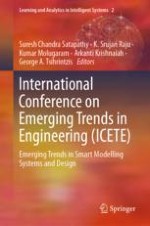This book constitutes the proceedings of the First International Conference on Emerging Trends in Engineering (ICETE), held at University College of Engineering and organised by the Alumni Association, University College of Engineering, Osmania University, in Hyderabad, India on 22–23 March 2019.
The proceedings of the ICETE are published in three volumes, covering seven areas: Biomedical, Civil, Computer Science, Electrical & Electronics, Electronics & Communication, Mechanical, and Mining Engineering. The 215 peer-reviewed papers from around the globe present the latest state-of-the-art research, and are useful to postgraduate students, researchers, academics and industry engineers working in the respective fields.
This volume presents state-of-the-art, technical contributions in the areas of civil, mechanical and mining engineering, discussing sustainable developments in fields such as water resource engineering, structural engineering, geotechnical and transportation engineering, mining engineering, production and industrial engineering, thermal engineering, design engineering, and production engineering.
